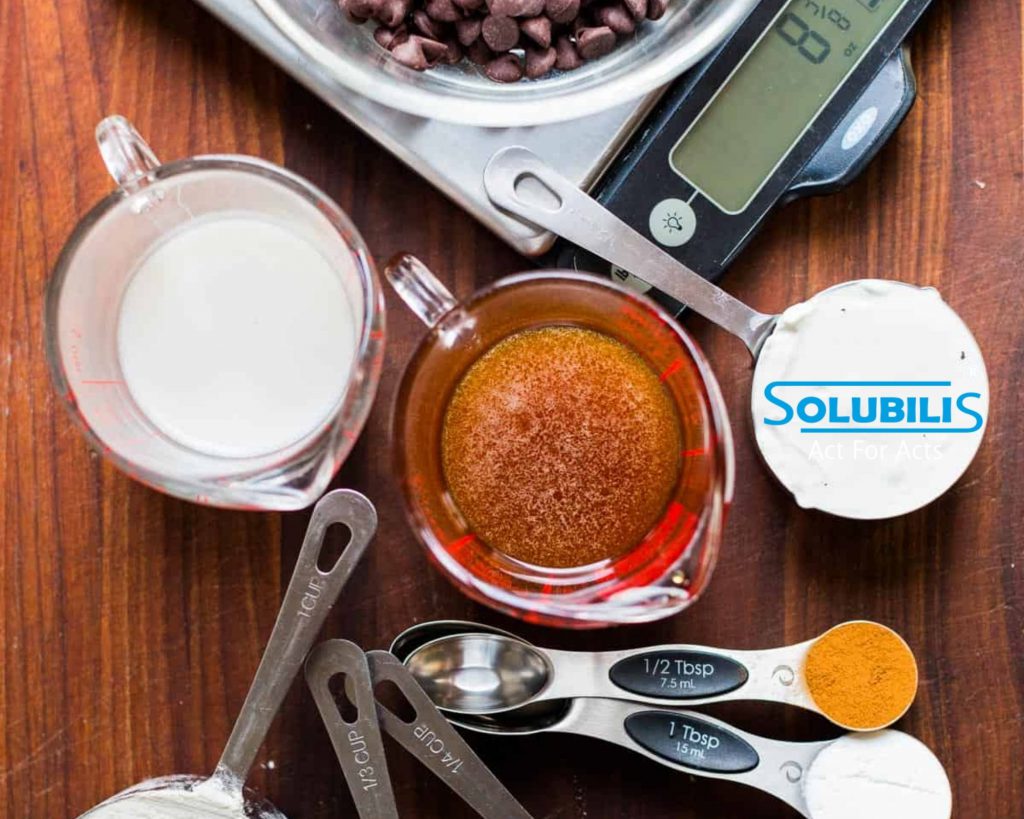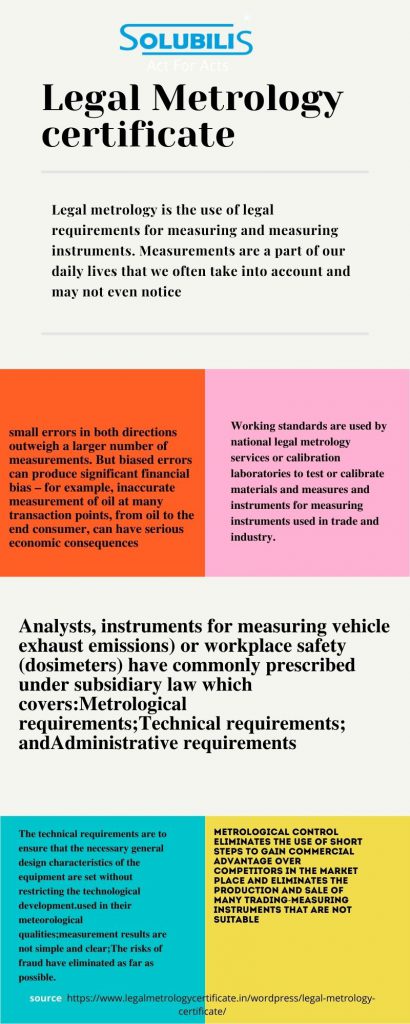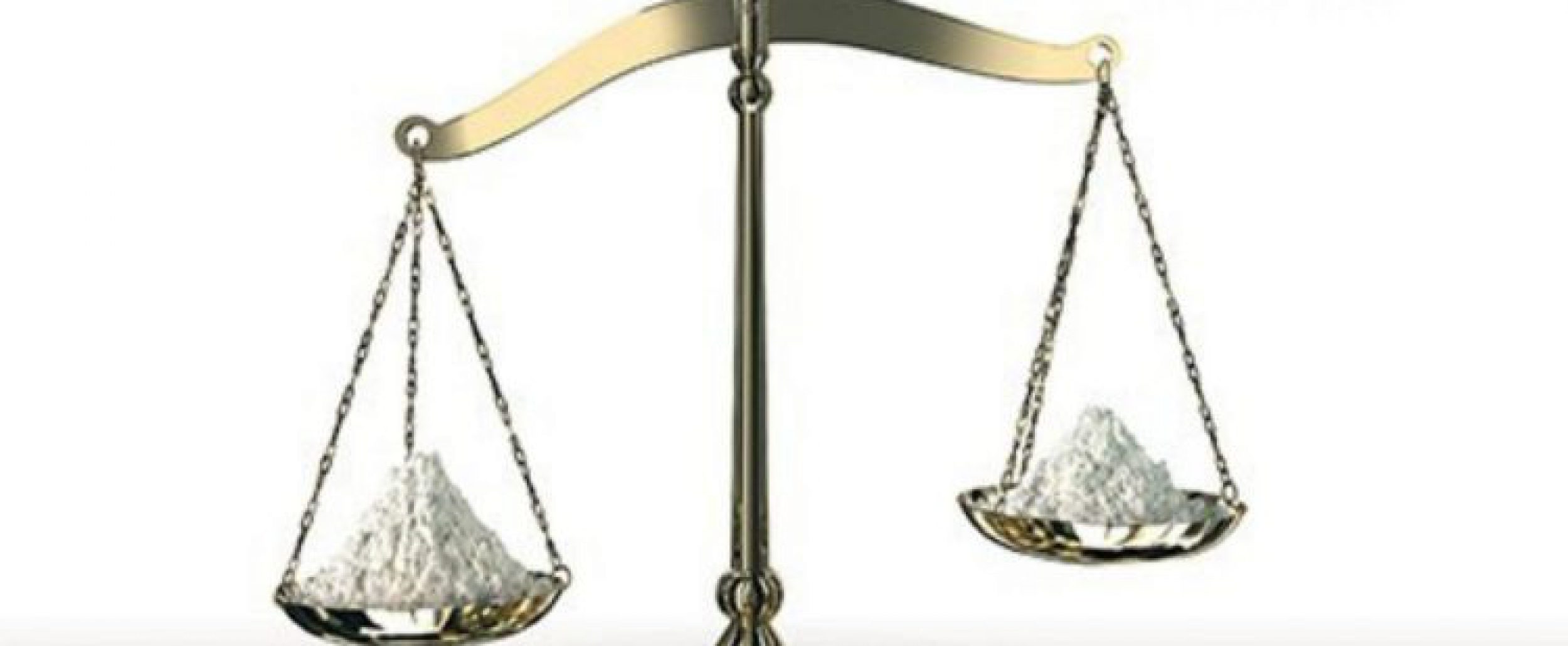Legal Metrology certificate

TALK TO EXPERTS
Legal metrology is the use of legal requirements for measuring and measuring instruments. Measurements are a part of our daily lives that we often take into account and may not even notice. For example
- We monitor the speed at which we drive to ensure we can travel safely and thus reduce road accidents,
- Generally we get medical checkups to make sure we stay healthy,
- People use time regularly for appointments, and satellite positioning systems to direct our location,
- Also people consume electricity, gas and water which have billed based on measurements,
- We buy meat, fish, fruits and vegetables by weight,
- Again we refuel our car by volume,
- Our vehicles have been inspected to keep an eye on the exhaust action extension level and so on.

Often, small errors in both directions outweigh a larger number of measurements. But biased errors can produce significant financial bias – for example, inaccurate measurement of oil at many transaction points, from oil to the end consumer, can have serious economic consequences.
National benchmark standards, which have compared at regular intervals with international standards of high accuracy, serve as the basis for assigning values to other standards of relative quantity. The custodian of national measurement standards, a laboratory commonly known as the National Metrology Institute, the National Bureau of Standards or the National Bureau of Weights and measures.
National standards have not used for daily work. It is used to calibrate the country’s secondary standards, which in themselves are commonly used to calibrate the working standards.
Standards
Working standards are used by national legal metrology services or calibration laboratories to test or calibrate materials and measures and instruments for measuring instruments used in trade and industry. The above standards represent etiquette, starting with the international standards at the top and moving down to the working standards. As far as accuracy of standards is concerned there is no general requirement. The working standard in one place is good enough to serve as a secondary or national standard in another place.
The purpose of maintaining a hierarchy of standards is to ensure the detection of measurements made in a country. The traceability of the measure is certain that it may be related to the national or international standard. As defined in the terms of basic and general legal metrology of international vocabulary, traceability is the property of the result of a measure or the value of a measure, where it may relate to the references commonly stated. National or international standards, by an unbroken chain of comparison, are all said uncertainties.

Technical regulation on measuring instruments
Use in public interest areas such as trade (weighing instruments, weights, measurement systems for liquids, electricity meters, and taximeters), health care (clinical thermometers, blood pressure instruments), environmental protection (gas chromatographs, nuclear absorption). ), Traffic surveillance (clear breathing)
Analysts, instruments for measuring vehicle exhaust emissions) or workplace safety (dosimeters) have commonly prescribed under subsidiary law which covers:
- Metrological requirements;
- Technical requirements; and
- Administrative requirements.
Metrological requirements aim to set the maximum allowable errors of the instruments and the conditions under which they must be met. They can also specify the range of measurement, indication of measurement, verification procedure, etc. The technical requirements are to ensure that the necessary general design characteristics of the equipment are set without restricting the technological development.
- used in their meteorological qualities;
- measurement results are not simple and clear;
- The risks of fraud have eliminated as far as possible.
Administrative requirements lay down scope and area of implementation of regulations, compliance with metrological and technical requirements, responsibilities of users of measuring instruments and the power to inspect instruments for the purpose of inspection.
International Co-operation in the field of Metrology
International Institute of Legal Metrology (OIML)
The International Organization of Legal Metrology (French OIML, Internationale de International Metrologie légel) was established in 1955 as an intergovernmental treaty organization with a membership of some sixty members who actively participate in technical activities, and about fifty corresponding members.
The main objectives of OIML are as follows.
Expansion of international recommendations and documents in various areas of legal law
Metrology;
- Dissemination of technical information on legal metrology (information on laws and
- Rules, experience of various technologies and experience of good methods)
- Through quarterly bulletins and the OIML web site;
- The removal of technical barriers to trade due to legal metrology through the harmonization of laws and standards, pre-packages and regulations.
- Promoting mutual recognition of measuring instruments and assessments corresponding to legal metrology; And
- the Promotion and development of legal metrology in the world
The International bureau of Weights and Measures (BPIM)
BIPM (from its French name Bureau International des Puids et Musers) had founded by 18 states as a result of the 1875 International Meter Convention in Paris. Today, there are almost 0 countries that are members of the convention, all of which are major industrial nations. The purpose of BIPM is to ensure worldwide uniformity of the standards of the International System of Units (SI) and their exploration. The BIPM operates through a series of consultative committees, the members of which are representatives of the National Metrology Laboratories of the member countries of the Convention and its own laboratories.
Benefits of Legal metrology
Customer safety
Goods packed with measurements and criteria, usually a number of simple solutions (buckets, plates, etc.) have been replaced as the basis for the transaction of various consumer goods and products. The increasing consistency of these 17 criteria, when adequately controlled, has led to a significant reduction in controversy and fraud and increased market efficiency.
Level playing field of commerce
Metrological control eliminates the use of short steps to gain commercial advantage over competitors in the market place and eliminates the production and sale of many trading-measuring instruments that are not suitable for the purpose of commercial measurement and ensures fair trade through pattern approval and certification. Do not meet internationally recognized standards.
Thus Legal metrology is inevitable in day-to-day life.


